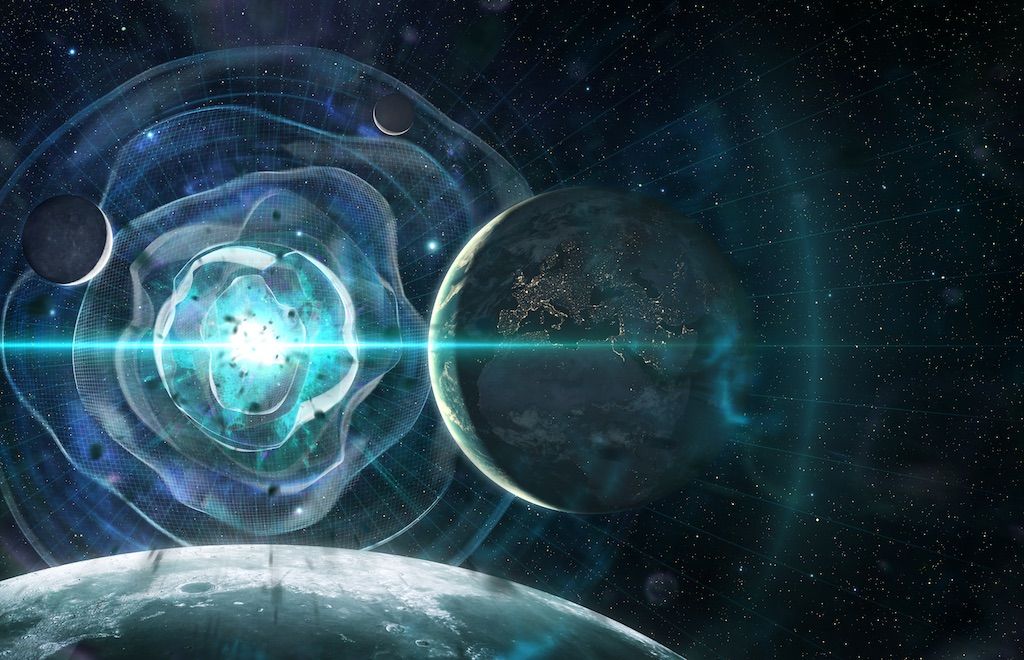
future (Image: © Tobias Roetsch/Future)
Scientists are known to have bequeathed us with numerous astounding revelations and mysteries of the universe from time to time. The mysterious ‘Space Roar’ is one such interesting revelation in the world of astrophysics. Lately scientists of NASA were blown away to have unexpectedly detected a strange loud noise in outer space termed as ‘space roar’ or ‘silent scream’ which was loud enough to drown other radio signals. But it is to be noted that sound cannot travel in space wherefore it being vacuum. So what exactly is causing the space roar and where is it emerging from ? Let’s dig a little deeper.
In 2006, scientists at NASA’s Goddard Space Flight Centre launched a machine to outer space called ARCADE(Absolute Radiometer for Cosmology, Astrophysics and Diffuse Emission) in a giant balloon from NASA’s Columbia Scientific Balloon Facility in Palestine, Texas with a motive to detect radiation from universe’s early stars. ARCADE contained seven sensors that were used to detect electromagnetic radiation such as radio waves. The balloon lifted it upto an altitude of 12,000 ft. ensuring the prevention of any interference from the Earth’s atmosphere in order that the finely-tuned instrument could detect the faint radio signals from ancient stars. But the results were far more astonishing from what was anticipated that left the scientists awestruck. The ARCADE had detected a much stronger signal described to be six times louder than anything predicted by the scientists and was perceived as a loud boom out of the blue.
This brings up the question if these loud signals are actually sound waves. Certainly not, these are not sound waves due to the fact that sound cannot travel in the vacuum of outer space as the molecules exist way too far apart for the occurrence of any interactions of these waves to property travel. Instead they are radio waves and the noise detected is said to be radio noise. Radio waves are not sound waves but electromagnetic waves situated at low frequency at the end of the light spectrum. Evidently, many objects in the universe including stars, quasars and even some galaxies emit radio waves via synchrotron radiation which is created when atomic particles spiral around magnetic field lines. Space Roar is caused by synchrotron radiation but the source of this radiation is still a perplexing enigma in astronomy.
According to Dale Fixen, a research scientist at the University of Maryland and a member of the ARCADE team, the devices built by NASA to detect the radio noises, performed by focussing at one point in the sky and then at some other nearby star for contrast. By measuring the differences between those two points it was possible to detect the radio emitting galaxies and supernovas. However those instruments were incapable of detecting synchrotron radiation. Fixen further added that ARCADE used a large beam that only covered 7% of the sky. Resulting to the large area it explored, and its high-precision sensors, it was the first ever instrument built that could discover the roar. Nonetheless since synchrotron radiation displays a characteristic spectrum, ARCADE couldn’t discover what the source of such booming roar was, owing to every source of the radiation exhibiting the same spectrum.
Attributing to the inability to detect the source of the space roar many feasible theories and explanations started to surface. One such debate arose on whether the Milky Way is the source of the roar. Fixen said that synchrotron radiation comes hand in hand with infrared radiation. However on measuring the amount of infrared radiation emitted by the Milky Way Galaxy with the COBE satellite, it has been concluded that with the level of our galaxy’s infrared it is highly unlikely for the Milky Way to be a source of such synchrotron radiation.
Secondly, there is a possibility that the roar could be emerging from the earliest stars. Since the first stars in the universe didn’t have any dust as they were formed in those stars, there could have probably been a generation of a plethora of synchrotron radiation in contrast to the infrared radiation. Thirdly, the radiation might be coming from the gases in the large cluster of galaxies. The instruments developed up until now are nevertheless incapable of detecting such radiations. Fourthly, it could be arising from an abundant bunch of dim radio galaxies. Whilst those are individually too quiet to be detected, combined they might be loud enough to generate such loud roar.
Although some theories may seem plausible, there is yet no fixed data to prove those claims. The problem with these radiations is that they are exceptionally loud and seem to drown other radio signals coming from stars as old as the universe itself. However, there is still an ongoing debate among scientists over whether to send back the ARCADE again or use an instrument on the ground next time. With the continuous advancement in technology, scientists are continuously trying to unravel the main source of the space roar. Once it is figured out, we may be able to witness the revelations of more such mysteries hidden in the vast universe such as the formation of the universe to the mysteries that followed the Big Bang. Until then, the source of the ‘space roar ‘ still remains an unsolved enigma in the world of cosmos.
By Benazir Siddique, Guwahati


